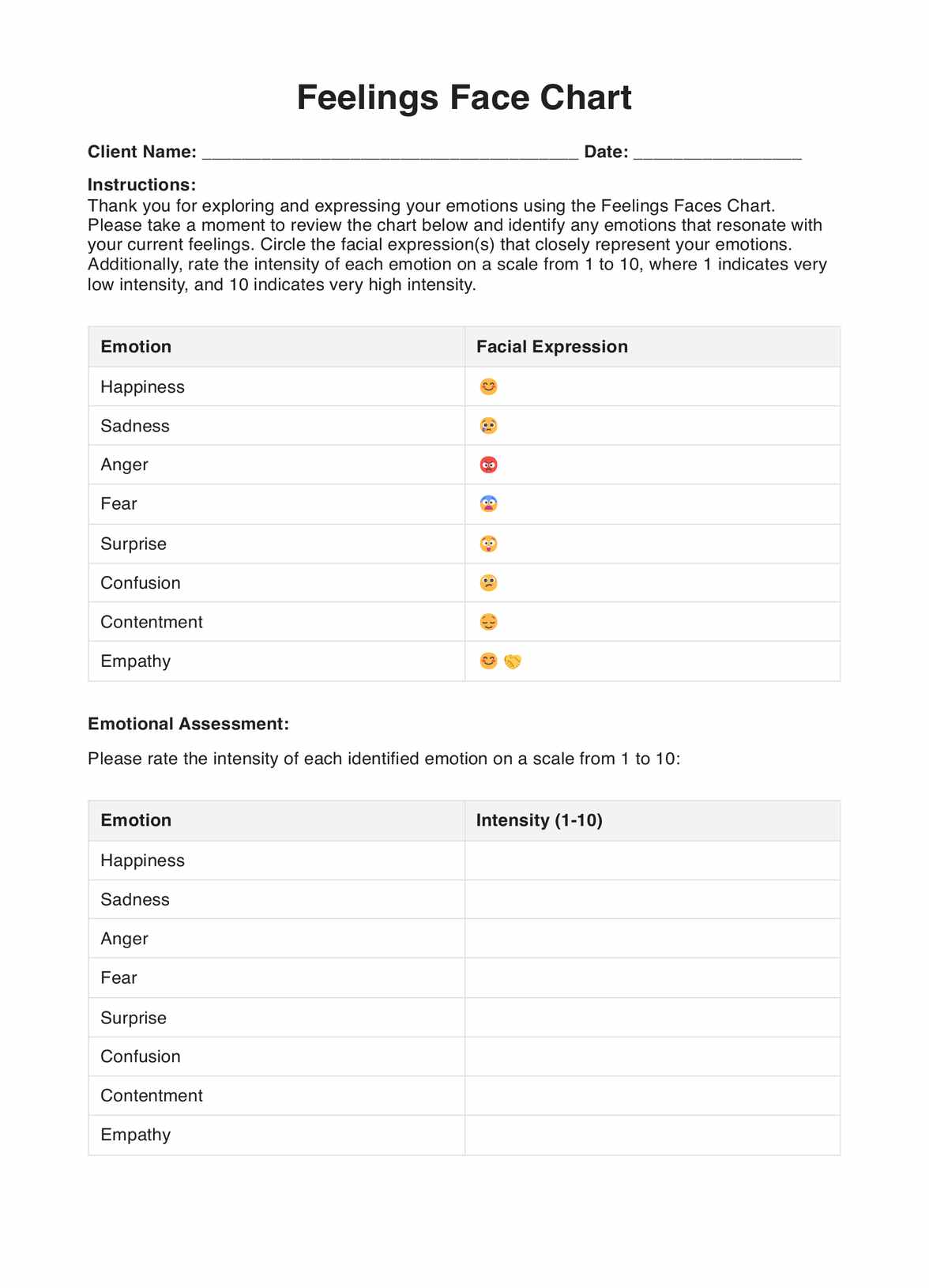The Feelings Faces Charts are used by therapists, counselors, educators, parents, individuals, and support groups seeking to enhance emotional expression and understanding.

Feelings Faces Chart
Express emotions effectively with the Feelings Faces Chart. Visual cues aid in identifying and communicating feelings.
Use Template
Feelings Faces Chart Template
Commonly asked questions
The Feelings Faces Charts are used during therapy sessions, counseling, classroom activities, play therapy, parenting workshops, conflict resolution, and self-reflection moments to explore and communicate emotions effectively.
Users identify and match their emotions to the corresponding facial expressions on the chart. They can point, communicate verbally, or use the charts for open discussions about emotions, fostering emotional awareness and empathy.
EHR and practice management software
Get started for free
*No credit card required
Free
$0/usd
Unlimited clients
Telehealth
1GB of storage
Client portal text
Automated billing and online payments











